My pasta machine
- rosemarydearman1
- Aug 17, 2019
- 7 min read
"with a little practice, you can produce your own fresh stuff which will knock the socks off anything from the supermarket" Felicity Cloake

Here's my faithful old pasta making machine on my kitchen bench together with its now somewhat beaten up box. I have had it for years and I use it regularly although almost exclusively for making lasagne or cannelloni. I rarely make ravioli kind of things these days, and although I have spaghetti, linguine and fettuccine attachments I don't use them. I once read Stefano de Pieri saying that he preferred dry pasta to fresh pasta, so I have been a bit put off having another go at the fettuccine, etc.

Besides you can cut perfectly good fettuccine, tagliatelle or linguine by hand, simply by rolling up your sheet of pasta and slicing it, unrolling it and tossing it in flour. If you then want to dry it you just leave it in nests on a tea towel and leave it to dry.
My younger son is a pasta fan and at one point he asked us for an electric pasta machine as a Christmas or birthday present. I can't remember which. Anyway, I don't even know whether he still has it. It certainly didn't get used a lot. I think it was probably a bit of a chore to clean it and get it out. An electric pasta machine will do the whole thing - mix the dough ingredients, knead it and then extrude it into whatever shape you want.
I am writing about this because recently I saw that Aldi was selling pasta machines, and I thought my daughter-in-law - his wife and a keen cook, might be interested. But no - she said she has one. I don't know whether she is referring to a mechanical one or the electric one we gave them all those years ago.
I love my pasta machine. It wasn't cheap - not like the Aldi one, but it has been a stayer in my kitchen. It is simple to use, pretty quick at making my lasagne, and no cleaning is involved other than brushing away the flour. Indeed you absolutely must not wash it.
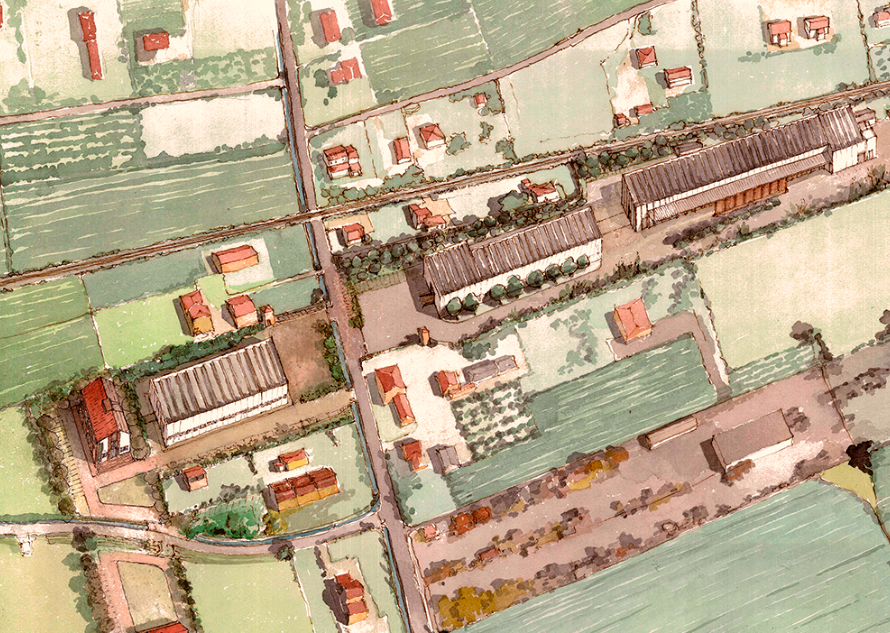
Mine is a Marcato Atlas 150 from the Marcato factory near Padua in Italy. Having now read various reviews of pasta machines I see that it is probably the second best - the best seems to be the Imperia. So I looked up Marcato and found that it is a company founded by one Otello Marcato who started making pasta machines at home back in 1930.
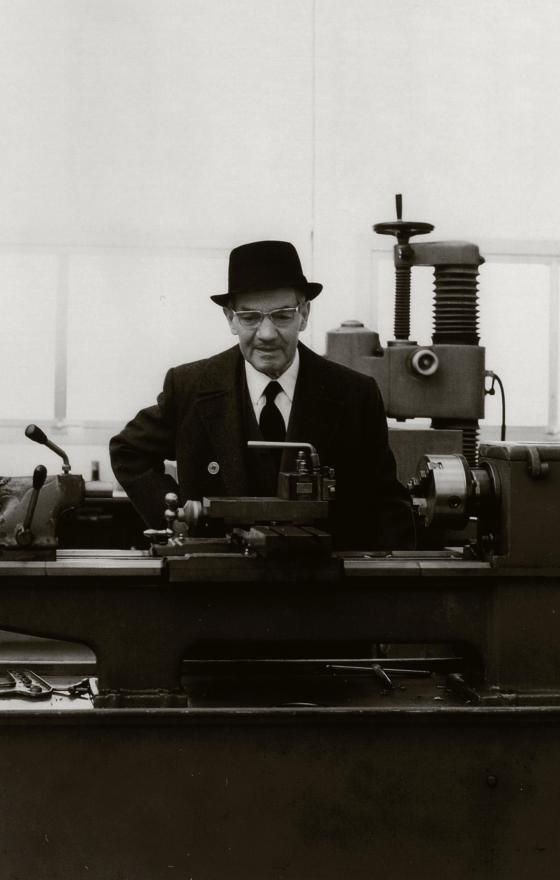
I wonder whether he wore that hat when he was working. His machine was so popular that he opened a factory in 1938. In 1962 he exported his first machines to America, beginning what is now a world-wide export business. But the current design - the Atlas 150 - did not come in until 1965. To celebrate the company's 80th anniversary (I think) they also introduced a new design called the Otello which is based on the original design. I do not know whether the family still owns the business or whether it has changed hands over time. Suffice to say that the factory has been considerably expanded over time, although it is still on the same site. As well as the pasta makers, they make a range of accessories for the machines, plus a biscuit maker. And I think that's all I can tell you about the machine itself, other than that you need to make sure that your dough is well floured or it will stick to the rollers and this makes it much harder to clean the machine. Indeed I have erred at times in the past and I really should have a look at removing some of the dried on pasta (there's only a tiny bit).
Going back to Stefano de Pieri and his comment about fresh versus dried. He may have been on to something in that:
"Fresh egg pasta gets its 'bite' from the egg proteins, and is traditionally served with the butter, cream and rich meat dishes of the north, while dried pasta generally pairs better with the olive oil and tomato recipes of the south." Felicity Cloake
Maybe he's from the south.
Having checked out the machine I thought I should look at how you make the pasta and found that I have really been somewhat lazy in the way I do it and that I should up my game. Felicity Cloake of course gives a really good summary of the different approaches that people make, although she doesn't say an awful lot about the right number of eggs to use. Some use eggs + a few egg yolks, some just use eggs. I always try to avoid egg yolks - I don't like to waste the egg whites - I never make meringues, so it's whole eggs for me. Guy Grossi says 6 eggs to 500g flour and Jamie says 6 to 600g. I think my machine book says 4 eggs to 500g. And that's what I use, although I often find I have to add some more liquid - which I often do by adding some tomato pasta, so maybe I should add one more egg. There is also argument over which flour - or semolina to use, though the general opinion seems to be that it should be the 00 flour that you can now buy in your local supermarket. As to semolina - it varies from none, or just a dusting, to half and half with Felicity Cloake plumping for 1/3 semolina to 2/3 flour.
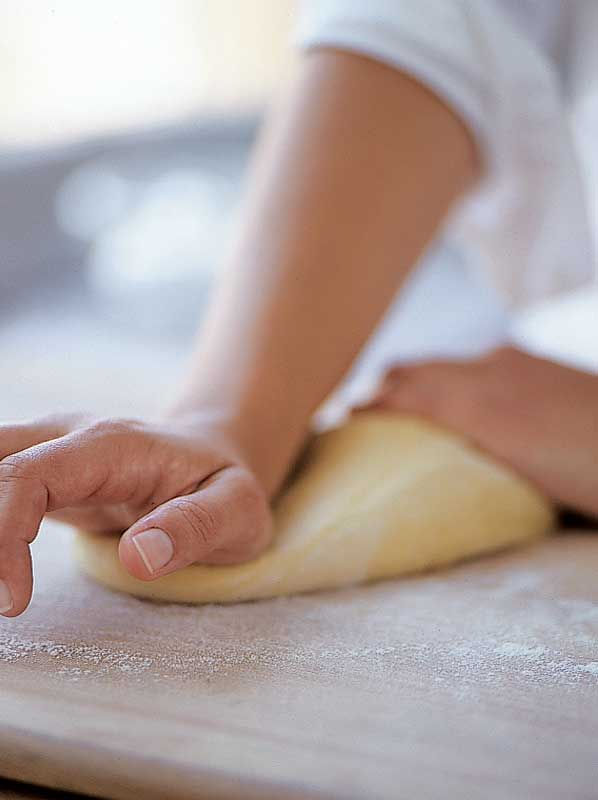
In the course of Jamie Oliver's recipe for fresh pasta he gives a couple of good tips about kneading and rolling it out.
"There’s no secret to kneading. You just have to bash the dough about a bit with your hands, squashing it into the table, reshaping it, pulling it, stretching it, squashing it again. It’s quite hard work, and after a few minutes it’s easy to see why the average Italian grandmother has arms like Frank Bruno! You’ll know when to stop – it’s when your pasta starts to feel smooth and silky instead of rough and floury."
Gordon Ramsay seemed to think this would take you about 20 minutes! Jamie says 5 I think. Whatever they all say, I now know that I do not do it for long enough. My dough is sometimes a bit grainy. I also discovered that I'm then supposed to wrap it in gladwrap and leave it to rest for at least half an hour. I guess there's no problem to this, but I just need to start earlier than I usually do. As to rolling it out - well there I am somewhat of a failure.
"When you've got down to the narrowest setting, to give yourself a tidy sheet of pasta, fold the pasta in half lengthways, then in half again, then in half again once more until you've got a square-ish piece of dough. Turn it 90 degrees and feed it through the machine at the widest setting. As you roll it down through the settings for the last time, you should end up with a lovely rectangular silky sheet of dough with straight sides - just like a real pro! If your dough is a little cracked at the edges, fold it in half just once, click the machine back two settings and feed it through again. That should sort things out." Jamie Oliver
And he is not that rigorous. Many of them seemed to be saying that you should do that folding and rerolling with every step down the thickness guide. I do fold it and redo it on the widest setting, but generally only once, and once I'm in to stepping down through the settings, I'm afraid I just keep going without refolding and rerolling. Maybe I should try it and see if it makes any difference.
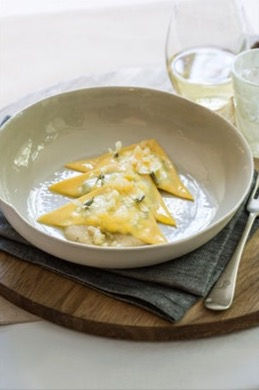
Guy Grossi ends his little lesson making fresh pasta with a recipe for Ravioli Genovese. It looks and sounds remarkably like the dish I had recently at the Florentino Grill, so I am including it here because it was absolutely delicious. I think there might have been a bit more sauce with mine. Anyway I just had to include it. Apparently if you make ravioli you can freeze them too, which might be a good idea because they are a bit fiddly to make.
“With ravioli and tagliatelle pasta you can roll it and keep it in a tray in the fridge. If you’re making filled pasta — a ravioli or tortellini — they freeze quite well. You can’t defrost them though. When you cook them, boil salted water and drop them frozen straight in.”
Guy Grossi

Then there's that very beautiful and dramatic handkerchief pasta. For this you place decorative pieces of herbs on one sheet of pasta, cover it with another and roll out again until you can just about see through it if you hold it up to the light. Then you cut it into squares - or any other shape you fancy I suppose, cook and serve with an appropriate sauce. I'm not sure that you would gain a huge amount of taste from this method but it has to be said that it looks dramatic.
Of course you can make fresh pasta and dry it - and then you can go for all those southern Italian dishes.
"If you plan to dry pasta, choose somewhere with little breeze and an ambient room temperature. You can use a clothes drying rack or dowel to hang pasta, or roll the noodles into nests, lay them on a clean tea towel and leave until brittle."
I was going to talk about all those other pastas that you roll by hand, like orecchiette - but maybe some other time. They are generally not egg pasta either, which is a whole other subject. In the meantime if you haven't got a pasta machine, run to Aldi and get one - they still have a few left in our Eltham store. They may well not be as good as a genuine Italian one, but I'm sure they will do the job for a while, and if you like doing it you can buy a more expensive one.
And one last thing. You need a lot of space to make fresh pasta. When you've rolled it out you get a pretty long length of pasta so you need space to lay it out flat. So in my kitchen I have to clear all David's stuff out of the way - he tends to encroach into my space. And when you've laid it out cover it with a damp tea towel or it will go dry. And kids just love doing this.
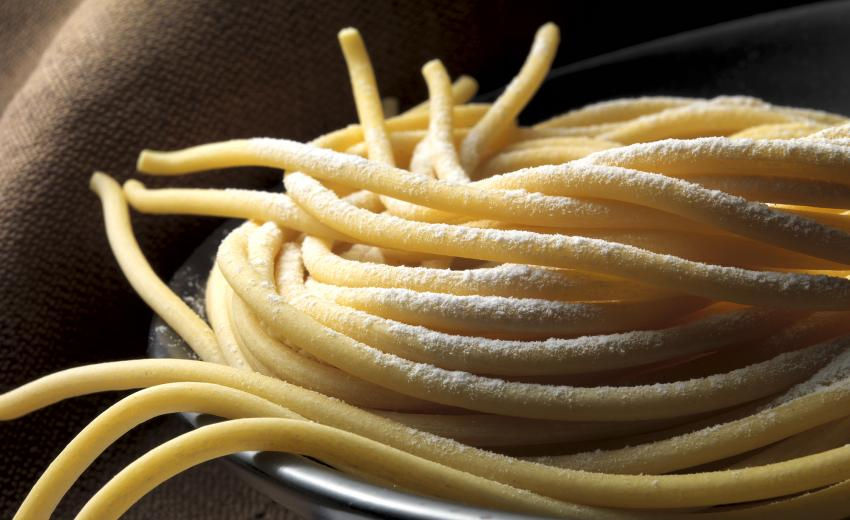
















Comments